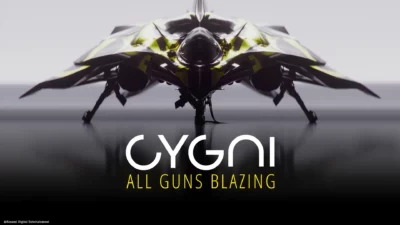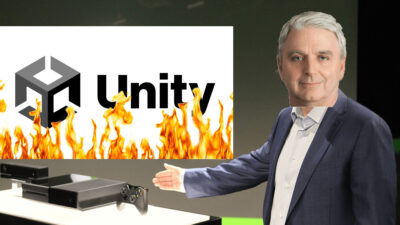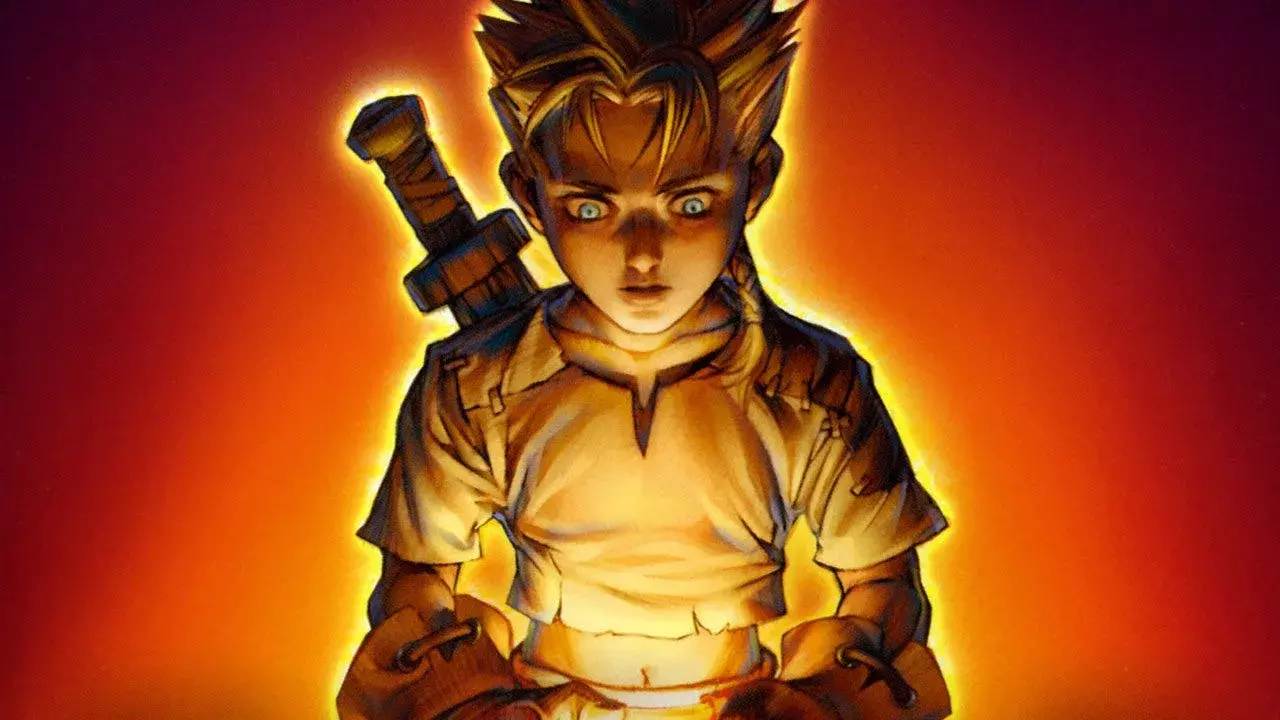
Fable co-creator Dene Carter and ex-Lionhead staff reveal how the series came to be, and their thoughts on a new entry in the much-loved RPG franchise.
Fable’s Albion was unlike any of the stereotypical fantasy worlds that dominate the genre. Gone were the armies of orcs and lengthy preambles about ancient dwarven kingdoms, replaced instead with tantalising tales of ghosts, balverines, and chicken chasers.
It was a world that felt uniquely British: where its inhabitants spoke in regional dialects, and even the bravest heroes weren’t safe from the odd bit of name-calling every now and then.
Years have passed since the last Fable entry, and there’s a new game in development at Playground Games. What better time, then, to look back at the history of the Fable series and the impression that it left on those who made it.
THE BIRTH OF FABLE
The story of Fable begins, not at Lionhead, but at the Lionhead satellite studio Big Blue Box. Ian Lovett and the brothers Dene and Simon Carter had started the small studio after leaving Electronic Arts in 1998, and were working on a bold, new multiplayer game called Wishworld.
But after pitching the game unsuccessfully to numerous publishers, the studio realised they needed a different approach. It was here that Lionhead Studios co-founder Peter Molyneux stepped in and suggested they make an RPG instead. Fed up with the “clichéd” and “pompous” RPGs popular at the time, the Carter brothers quickly agreed.
“We wanted the populace to be ignorant, and the world’s past to be mysterious and magical,” Dene Carter explains. “We wanted rumour and reckoning to win out over exhaustive histories learned peculiarly well by even the most ignorant peasants in the land.”
To say that Fable was an ambitious undertaking is an understatement. Not only did the project contain RPG elements such as quests, loot, and upgradeable abilities, but it also moonlighted as a social sim that let players buy their own home, marry villagers, and decide whether to be good or evil.
This ambition resulted in some huge problems for the development team, and eventually the decision was reached to merge Big Blue Box with the rest of Lionhead, after the former company’s acquisition. The problems didn’t stop there, though.
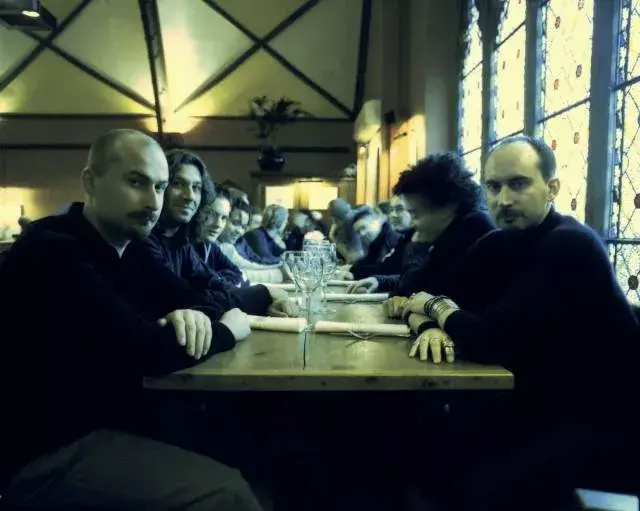
The original Fable team was remarkably small. The numbers would, however, grow much larger with each subsequent release.
There would be an unhealthy culture of crunch at Lionhead in order to get Fable finished and out the door. Tight deadlines became the norm, with studio members working punishingly long hours to hit important milestones. On top of this, the game went through many drastic redesigns, with features constantly being revised with little time to spare.
The prevailing sense at the time was that the project was destined to fail, with none of the pieces clicking together as intended.
“There was a period near the end where I was convinced our game sucked,” remembers Dene Carter. “The combat felt terrible. The cutscenes were janky, and the dialogue was spoken with robot voices we’d generated… I was convinced we were sliding into a pit of doom borne of our inexperience in making 3D action games, and that the game was going to be a failure at every level.
“Only a couple of months before the end, a couple of small things happened. Russell Shaw’s music went in. The hundreds of lines of actors’ dialogue went in. The particle effects went in. Over the course of about six weeks, the lurching, ungainly, vacuous ‘thing’ we’d been making started to transform into a charming fairytale world.”
ACORNS AND ORPHANS
In the first Fable, players control the Hero of Oakvale, a young orphan whose village was attacked by raiders and a masked figure known as Jack of Blades. Adopted by the Heroes’ Guild, the player must hone their skills and complete quests, before deciding whether to save Albion or seize Jack of Blades’ power for themselves.
On Fable’s release in 2004, response to the game was mostly positive. Critics praised the game for its unique sense of humour and open-ended gameplay, but criticised its short story and the absence of certain features that Molyneux had teased prior to launch: the ability to have children, and plant acorns and watch them grow over time.
“Peter was busy with Black & White at the time of Acorngate,” explains Dene Carter. “All he knew was that we had this engine left over from the Wishworld project and that it was capable of morphing in real-time and generating nice forests. He saw no reason why we couldn’t extend this morphing to every single piece of plant-life in the game.
As far as Simon, Martin Bell [the engine coder], and I were concerned, tree growth was something that would require a real-time update of navigation data, would break our foliage technology, and – as far as we could see – would have no actual gameplay value whatsoever.”
Carter refers to Molyneux’s habit of announcing unplanned features as “testing ideas on the press,” a tactic he had done in the past at his previous studio, Bullfrog. Whenever Molyneux would tease a new idea, panic would set in among the team at home, with everyone attempting to come up with a solution to make it work at short notice.
After Fable released, the team took a small break and then set to work on an expanded version of the game called Fable: The Lost Chapters. This introduced new areas, new quests to complete, and new customisation options for characters, helping to alleviate some of the frustrations that people had with the length of the original release.
500 YEARS LATER
The development of Fable II would be far less hectic than the previous game. Whereas Fable had been the culmination of wild experimentation, Fable II benefited from a well-planned production schedule and a much larger development team – a result of Lionhead’s acquisition by Microsoft.
“On [Fable], we would come up with a sort of first draft and then the writers would amend it afterwards,” says Neil Whitehead, a scripter on the three mainline Fable games. “[For Fable II], we had writers on-board from the start, and they’d produce briefs, and then we’d have a whole eight-page document about the exact dialogue that needed implementing. It all felt a bit less spontaneous. I think that’s maybe what the bigger team brewed.”
“It changed a lot,” says Dene Carter. “We didn’t crunch the team for 18 months at a time. We had a good production team right from the start, rather than having to bring on the utterly transformative Louise Murray [as producer] for the last year or so. We had a lot more confidence that we could actually make this style of game.
It was – in a word or two – more fun. We didn’t drive anyone mad, and felt like we were actually professionals making a professional thing rather than a bunch of loonies scampering around putting out an increasingly large succession of fires.”
In Fable II, the land of Albion had changed considerably. Five-hundred years had passed since the events of the first game, and the Heroes’ Guild had been reduced to ruins. Dene Carter attributes this jump in time to the influence of the British TV show Blackadder and an attempt to prevent over-familiarity.
In place of the medieval influence present in the first game, Fable II drew inspiration from 17th-century Britain. The player could wield flintlock pistols as opposed to crossbows, and would encounter highwaymen while travelling between locations.
The story also went in a different direction, with a new villain, Lord Lucien Fairfax, taking over from Jack of Blades. In the game, players would become the Hero of Bowerstone, an orphan whose sibling Lord Fairfax had murdered at the beginning of the game. With the help of the seer Theresa, players needed to track down the remaining heroes in Albion and get revenge on Lord Fairfax.
In typical Fable fashion, though, you could also ignore the main quest and take part in other, more trivial activities. Marriage returned in Fable II, for example, with players able to buy a house and have children. You could also take on additional jobs for gold: chopping wood, making weapons, and hunting down criminals.
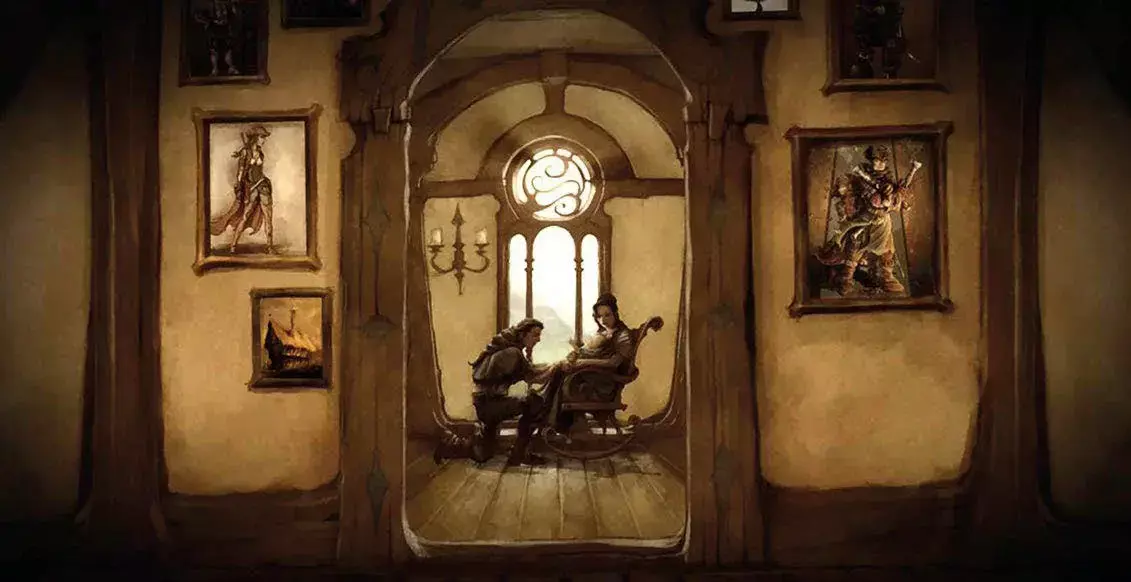
Children are a wonderful thing. That is, until you have to pay for them with your hard-earned wood chopping money.
CONCRETE AND DOGS
Another huge change was the addition of an AI companion, a dog, that could follow the hero around and bark whenever treasure was nearby. Peter Molyneux personally requested this feature be included, though the reasons for this seem to change depending on who you ask.
Some claim it was a result of the death of his real-life dog, that had been shot by a farmer sometime prior to Fable II’s development, while others point to a somewhat less tragic influence: a text adventure called NetHack that Molyneux was a fan of.
Regardless of its origins, the dog proved to be a nightmare for the programming team, taking a considerable amount of effort to get working correctly.
“It went from programmer to programmer to programmer,” says Charles Griffiths, a member of the scripting team on Fable II. “It became kind of cursed, because some of the programmers that were responsible for it left [or were reassigned]. That poor dog kept getting handed around from owner to owner, with everyone struggling to get it to behave.”
“It definitely proved one of the biggest challenges for the programming and animation team,” adds Andrzej Zamoyski, a Fable II level designer. “AI companions are always a nightmare, and ‘working on the dog’ was like a curse within the studio. Personally, I loved the feature, and thought it fitted the world of Fable perfectly.”
Another issue that people cite with the production was Concrete, the new, all-encompassing engine that Lionhead had built to be used on all their projects at the time. The engine suffered from extremely poor load times and pretty shaky stability, which made some simple tasks a chore. Losing days of work wasn’t uncommon, as well as having to wait up to half an hour for groups of assets to delete.
Fable II released in 2008 to critical acclaim. Members of the press praised the game for retaining the charm of the original, while introducing innovative new features, such as the breadcrumb trail. At a launch party in a London nightclub, Molyneux would reveal the review scores to the rest of the team.
“One thing I remember before everything turns to a bit of a blur was Peter stood on a makeshift stage,” Ted Timmins, a senior scripter on Fable II and III, remembers. “When you’ve worked so hard on something, it can be hard to see the wood through the trees… so when Peter got to the Edge score, everyone went quiet, and he read out ‘9/10!’. The whole place erupted, booze went everywhere, the cigars came out – my first-ever cigar – and the party really started.”
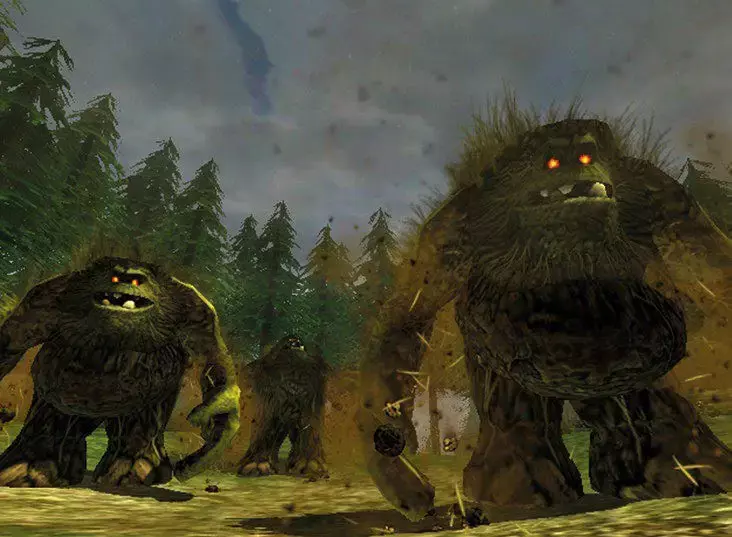
The creature designs were a Fable series highlight.
THERE AND BACK AGAIN
Production on Fable III began almost immediately after Fable II, with a strict deadline set for only two years in the future. Because of this, and likely the business imperative to produce more than one game with the same engine, a lot of the tools had to be reused on Fable III. While some sources say those tools did eventually improve, change was slow to come.
“I poured my soul into Fable II and the DLC packs, and when it was over, like much of the team, I was completely burned out,” Zamoyski says. “When work began on Fable III, and it became clear the tools were not going to get fixed, I had to get out.
“While continuing to make new levels, I fought against management who refused to let me switch projects. Eventually, I spoke with Peter and with his help managed to escape with my sanity – only to return to Fable III one project later.”
Despite the looming deadline, Fable III introduced a number of significant changes to the Fable formula. The action moved forward another 50 years, with players becoming the son of the hero from the last game. Skill points were axed in favour of a new progression system called the Road to Rule, and the inventory was replaced with the Sanctuary, a three-dimensional area where players could change their costumes and equip items.
Says Neil Whitehead: “Where previously there was more scope to experiment and toy around with things, with this one, there was more of a hard date of ‘We need to finish this in two years or so.’ But despite wanting to finish it in two years, it was ‘Here’s all the things we’re going to change and do differently.’ Which yeah, made it a bit of a difficult development.”
The Road to Rule, in particular, was a last-minute addition that Molyneux requested, but that production had said would only be possible with another six months. Timmins was the person who stepped forward to implement the mechanic in only three weeks, doing so in return for going to E3 with the rest of the team.
“We made some bad decisions about the importance of RPG [elements] during development, and then suddenly we were just two months out from delivering a gold master and Road to Rule didn’t exist,” says Timmins. “Quite honestly, we had a Fable game with no sense of RPG progression. Cue a ‘deal with the devil’, a last-minute trip to E3, and a lot of Domino’s pizza, and we somehow salvaged something.”
In Fable III, the main goal was to gain support from allies and overthrow your brother, the tyrannical King Logan. However, the decision was made to have the game continue after Logan had been defeated, with a new threat, the Darkness, introduced so that players would have to raise funds as the king or queen in order to defeat it.
This section of the game was originally conceived to be equal in length to what had come before it, with players being able to make important decisions as ruler. But it would be simplified considerably in the finished version due to the time that was available.
“If I recall correctly, you could alter laws and the world would change,” says Edwards, who became a level designer for Fable II and III. “There were more little sliders. Then it became more big alterations. So, I think that’s partly how it changed.
“Then they did that thing where the more money you make to save the world, the better the type [of ending you’d get], which I thought was terrible, personally. Fable III just seemed to make things a little bit simpler for people to understand rather than this complicated or more reactionary-type game.”
“Major aspects of the game kept changing up until the last minute, which meant there was a lot of rework,” says Andrea Roberts, an editor at Microsoft, who worked on Fable III. “We did over 100 revisions on the script for the intro scene alone. There was so much voiceover to record that we had three sessions running simultaneously every day for six weeks, and we were working late in the night, every night, to have everything ready to record the next day. It was the most intense crunch I’ve ever done.”
Fable III released to positive reviews, but there were some who criticised the game for its clunky inventory system and its departure from the series’ role-playing roots. Regardless, it’s hard not to look at the project as an impressive feat, especially considering the odds the team were up against.

Despite Peter Molyneux’s teases, trees didn’t grow over time in Fable.
AN INDELIBLE MARK
“If you asked a lot of people who worked on Fable III, I feel confident it would be unanimous that we really needed another six months’ dev time,” says Timmins. “Fable took six-plus years, Fable II was four years, and then for Fable III, we were suddenly calculating the project in months!
“There’s a great game in there just waiting to be finished, but I remember it being about an 18-month dev cycle which, for a game as ambitious as we were trying to make, didn’t turn out that way.”
Following Fable III, another mainline sequel failed to materialise. First, was there was an on-rails spin-off, Fable: The Journey for Kinect, released in 2012. Then there was Fable Anniversary, a remake of the first game, in 2014.
Lastly, there was Fable Legends, a four-vs-one multiplayer game that would eventually be cancelled when Lionhead closed its doors in 2016. Everything went quiet until 2018, when Eurogamer reported a new game was entering development over at British developer, Playground Games.
The response to this news among ex-Lionhead staff is mixed. Some are critical of whether the tone of Fable can ever be replicated without the same personnel. Others are excited about the prospect and the attention it may bring to their work. “It’s going to look amazing, I’m sure, because the tech is going to be amazing,” says Edwards.
“But the only thing is, will they try too hard to be Fable-y or will they do their own thing and not be Fable-y? It’s capturing that spirit. The ability to kick a chicken and a farting animation isn’t enough. I hope they don’t think, ‘Oh, that’s what Fable is; let’s stick that in.’ As long as it’s not a sterile, high-fantasy RPG… I’m excited to see what they come up with.”
“Fable, to me, is not just a brand or one or two key directors,” says Griffiths. “It’s also a lot of the senior coders, scripters, artists, etc. Sure, teams can change and staff come and go. But when it’s a complete, wholesale replacement of one team with another… Well, at that point it’s really just a new game. I wish Playground – or whoever it is making the new game – all the best, but to me, if it’s not Lionhead or Big Blue Box, then it’s not really Fable.”
Lionhead left an indelible mark on the British games industry, one that is still felt today in every scrappy indie and creative studio that rose from its ashes. Fable was a huge part of that legacy, changing the lives and fortunes of many of those who made it.
“Fable taught me I was a creative,” says Dene Carter. “Creating Albion was a lesson in active dreaming, in taking mood, tone, and atmosphere and crafting it into something the audience can tell is filled with love. Fable is more than its mechanics and systems. It is Albion; filled with quirks, mysteries, and a curious, bucolic, silly charm. When reviews mentioned these aspects, it made me feel the struggle had been worthwhile.
“Making Fable transformed me.”
This article originally appeared in issue 27 of Wireframe magazine.


